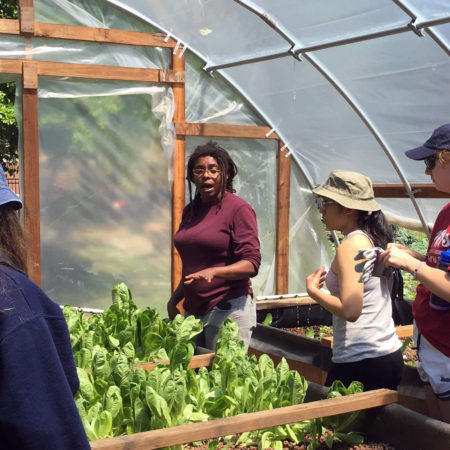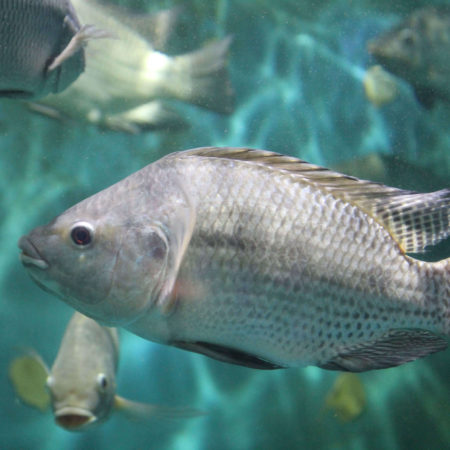Issues Recirculating Systems
There has been increasing interest in recirculating farms from the community level to industrial. We support systems that are embedded in the communities for local food production, processing, and distribution. Recirculating farms have the potential to empower communities, while growing culturally appropriate produce and fish. The following guiding principles lead to model standards for sustainable recirculating farms.

Water Conservation: Recirculating farms reuse most of the water in the system. Many systems are able to recapture about 90 percent of water and re-use it in the farm.

Energy Usage: Recirculating farms require varying amounts of energy to move water through the system and support plants and/or fish. Farms should use alternative and renewable energy sources and/or partner with other existing facilities to minimize energy use and maximize function.

Closed Loop: A sustainable farm should be a biosecure, on-land, and mostly closed-loop system that captures, recycles, and treats the waste that is generated.

Location: Recirculating farms can be located almost anywhere when they are closed loop, scalable, eco-friendly, and efficient. The versatility in design - vertical and off the ground, indoors or outside - allows for growing in spaces that may otherwise be unsuitable for food production, such as rocky, small, awkwardly shaped, in backyards, on terraces, inside buildings, and abandoned or vacated sites.

Natural Products: Recirculating farms can be a source of local, non-GMO foods grown without antibiotics, other drugs, or chemicals.

Stocking Density: Ideal stocking densities are complex, comprising both physiological and behavioral needs of each specific type of fish. The recommended stocking range should be determined based on the individual needs of each type of fish to be grown in the farm.

Feed Conversion Ratio: Traditionally, large amounts of wild fish are used in fish feed. Research is ongoing to improve fish food, including reducing the amount of wild fish; finding alternative feed ingredients that are healthy and natural; and, repurposing waste to create a natural food source. The feed conversion ratio should be less than one pound of wild fish to one pound of farmed fish.

Humane Treatment: Recirculating farms should maintain proper water quality and stocking density for the type of fish being raised, regularly monitor the fish, minimize handling, maintain low stress levels and practice humane slaughter techniques.

Social and Economic: Recirculating farms located away from the coast can grow fish that differ from those naturally occurring. Since these farms can be situated anywhere, they support communities to source their own food, reduce fuel needs for transportation and refrigeration, and provide fresher food for consumers.
